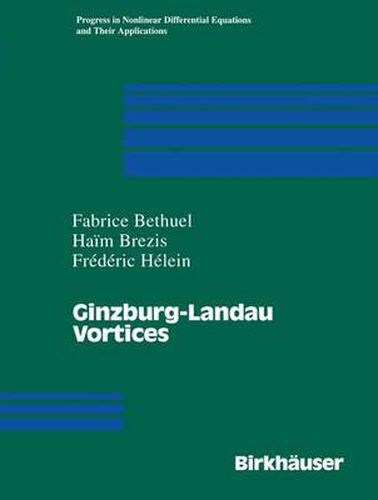Readings Newsletter
Become a Readings Member to make your shopping experience even easier.
Sign in or sign up for free!
You’re not far away from qualifying for FREE standard shipping within Australia
You’ve qualified for FREE standard shipping within Australia
The cart is loading…






This title is printed to order. This book may have been self-published. If so, we cannot guarantee the quality of the content. In the main most books will have gone through the editing process however some may not. We therefore suggest that you be aware of this before ordering this book. If in doubt check either the author or publisher’s details as we are unable to accept any returns unless they are faulty. Please contact us if you have any questions.
The mathematics in this book apply directly to classical problems in superconductors, superfluids and liquid crystals. It should be of interest to mathematicians, physicists and engineers working on modern materials research. The text is concerned with the study in two dimensions of stationary solutions uE of a complex valued Ginzburg-Landau equation involving a small parameter E. Such problems are related to questions occuring in physics, such as phase transistion phenomena in superconductors and superfluids. The parameter E has a dimension of a length, which is usually small. Thus, it should be of interest to study the asymptotics as E tends to zero. One of the main results asserts that the limit u* of minimizers uE exists. Moreover, u* is smooth except at a finite number of points called defects or vortices in physics. The number of these defects is exactly the Brouwer degree - or winding number - of the boundary condition. Each singularity has degree one - or, as physicists would say, vortices are quantized. The singularities have infinite energy, but after removing the core energy we are led to a concept of finite renormalized energy. The location of the singularities is completely determined by minimizing the renormalized energy among all possible configurations of defects. The limit u* can also be viewed as a geometrical object. It is a minimizing harmonic map into S1 with prescribed boundary condition g. Topological obstructions imply that every map u into S1 with u=g on the boundary must have infinite energy. Even though u* has infinite energy one can think of u* as having less infinite energy than any other map u with u=g on the boundary. The material presented in this book covers mostly recent and original results by the authors. It assumes a moderate knowledge of nonlinear functional analysis, partial differential equations and complex functions. It is designed for researchers and graduate students alike and can be used as a one-semester text.
$9.00 standard shipping within Australia
FREE standard shipping within Australia for orders over $100.00
Express & International shipping calculated at checkout
This title is printed to order. This book may have been self-published. If so, we cannot guarantee the quality of the content. In the main most books will have gone through the editing process however some may not. We therefore suggest that you be aware of this before ordering this book. If in doubt check either the author or publisher’s details as we are unable to accept any returns unless they are faulty. Please contact us if you have any questions.
The mathematics in this book apply directly to classical problems in superconductors, superfluids and liquid crystals. It should be of interest to mathematicians, physicists and engineers working on modern materials research. The text is concerned with the study in two dimensions of stationary solutions uE of a complex valued Ginzburg-Landau equation involving a small parameter E. Such problems are related to questions occuring in physics, such as phase transistion phenomena in superconductors and superfluids. The parameter E has a dimension of a length, which is usually small. Thus, it should be of interest to study the asymptotics as E tends to zero. One of the main results asserts that the limit u* of minimizers uE exists. Moreover, u* is smooth except at a finite number of points called defects or vortices in physics. The number of these defects is exactly the Brouwer degree - or winding number - of the boundary condition. Each singularity has degree one - or, as physicists would say, vortices are quantized. The singularities have infinite energy, but after removing the core energy we are led to a concept of finite renormalized energy. The location of the singularities is completely determined by minimizing the renormalized energy among all possible configurations of defects. The limit u* can also be viewed as a geometrical object. It is a minimizing harmonic map into S1 with prescribed boundary condition g. Topological obstructions imply that every map u into S1 with u=g on the boundary must have infinite energy. Even though u* has infinite energy one can think of u* as having less infinite energy than any other map u with u=g on the boundary. The material presented in this book covers mostly recent and original results by the authors. It assumes a moderate knowledge of nonlinear functional analysis, partial differential equations and complex functions. It is designed for researchers and graduate students alike and can be used as a one-semester text.